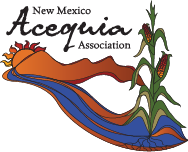Acequia Infrastructure Needs
Although there is no comprehensive statewide inventory of acequia infrastructure needs nor a cost estimate to address those needs, we can get a sense of the types of projects needed around the state (See table below from the 2015 Statewide Acequia Needs Assessment by NMAA). We can also gain an idea of acequia funding needs from completed Infrastructure Capital Improvement Plans (ICIPs) although those represent a relative small number of acequias. In 2014 and 2015, the a total of the top infrastructure priority for 30 to 40 acequias was between $15 million and $20 million. Projects range from relatively small such as installation of culverts ($10,000) to larger scale pipeline or storage projects (up to $3 million).
Overview of Sources of Acequia Infrastructure Funding
- State Funds include the ISC 90-10 program, appropriations to ISC, Capital Outlay, Water Trust Board.
- Federal Funds include the NRCS RCPP Program, the NRCS Acequia Initiative, and the Army Corp of Engineers Acequia Program.
- Local Funds include Soil and Water Conservation Districts and Acequia assessments.
(Note that a detailed list of funding sources is available from the NMAA.) Different types of funding are suitable for specific projects with some sources lending themselves better to small or medium projects (90-10, RCPP, Capital Outlay, Local) while others are more suitable for larger projects (Water Trust Board or Army Corp of Engineers). Some sources are more accessible than others depending on eligibility requirements and the rigor of the application process.
Challenges in Funding Acequia Infrastructure Projects
Governance Capacity – Acequias are political subdivisions of the state and eligible for a variety of funding programs, both state and federal. However, acequia officials are volunteers who are called upon to manage complex projects and to meet reporting, audit, and financial compliance requirements. For some acequias, requirements of the Procurement Code can also be daunting.
Planning and Engineering Design – Many acequias face challenges in completing an engineering design for their project. It is important to note that not all projects require an engineering design but even relatively simple projects should have design specifications from a technical expert. The number of acequias who need engineering designs for their projects exceeds the amount of resources available for “free” engineering services from the NRCS (which historically has done engineering designs for acequias) or the NMACD. In past years, the waiting list for an NRCS design has been three to five years.
Construction Completion – Depending on the approach used by the acequia to secure funding, and specifically to obtain matching funding, completion of the construction can be challenging. Some funding sources have a cap (e.g. 90-10 has a cap of $150,000) and Capital Outlay appropriations are often incomplete. In some cases, bids from contractors come in higher that the engineering cost estimate.
New Strategies that are Working
Partnerships and Phased Planning-Design-Construction. Because of the new RCPP program, the partners are collaborating on a phased process in assisting acequias with their infrastructure projects. The attached flowchart shows the process starting with a Preliminary Assessment and Cost Estimate, followed by an Engineering Design, and lastly with Construction and Inspection. Lastly, the partnership accounts for the need to assist acequias with financial reporting and audits.
Infrastructure Capital Improvement Planning. The ICIP process is intended to provide a tool for local governments to make five year plans to achieve infrastructure goals. Every year, more acequias are availing themselves of this tool with the assistance of NMAA. The ICIP encourages an acequia to think about how to phase projects and to confront the challenge of how to pay for their projects before they make the requests for funding. It also provides a way to track funding already obtained and to which projects such funds are allocated.

